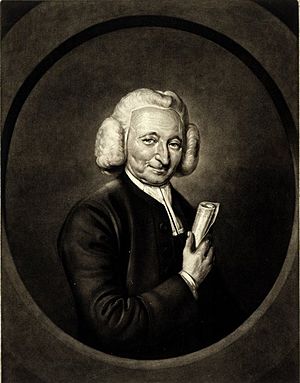Andrew Gifford facts for kids
Andrew Gifford (1700–1784) was an important English Baptist minister and a collector of old coins, known as a numismatist. He also worked as a librarian at the famous British Museum.
Contents
Andrew Gifford's Early Life and Education
Andrew Gifford was born on August 17, 1700. His father and grandfather were both Baptist ministers in Bristol, England. Andrew followed in their footsteps. He went to a special school called a dissenting academy in Tewkesbury. Later, he continued his studies with Dr. John Ward.
Gifford's Ministry and Career
Around 1725, Gifford began his work as a minister in Nottingham. In 1726, he helped his father in Bristol. By 1730, he became the pastor of a Baptist church in Eagle Street, London.
From 1731 to 1745, he also served as a chaplain to important people like Sir Richard Ellys and his wife. In 1754, he received a special degree, a D.D., from the University of Aberdeen in Scotland.
Working at the British Museum
Andrew Gifford loved collecting old coins. He was also a member of the Society of Antiquaries of London, a group that studies history and old objects. Because of his knowledge and friends, he was chosen to be an assistant librarian at the British Museum in 1757. This was a very important job. He worked there until he passed away on June 19, 1784. He was buried in a place called Bunhill Fields.
Andrew Gifford's Legacy and Collections
Andrew Gifford published two of his sermons, which are religious speeches. One was about a big storm in 1703, and another was for a group called the "Friendly Society." He also helped to publish a book about English silver and gold coins for the Society of Antiquaries.
Gifford had a large collection of coins. King George II bought this collection for his own private collection. However, Andrew Gifford left many of his other collections to the Baptist academy in Bristol. These included books, old writings, pictures, and other interesting items. He also left £400 to his church in Eagle Street.
Images for kids



